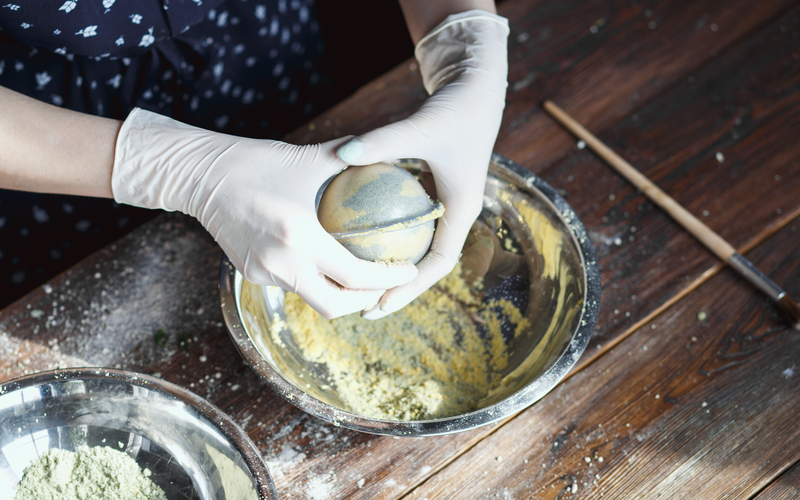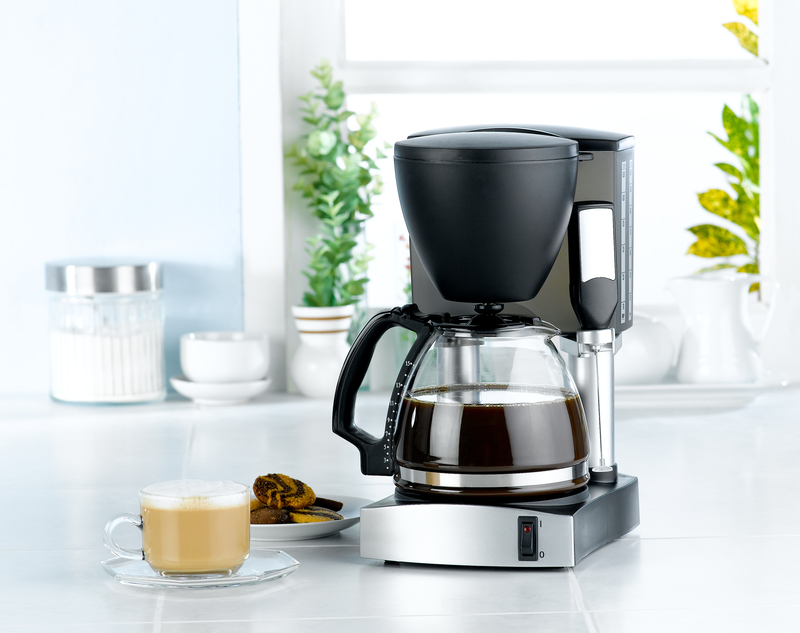Flawless Finish: Easy Methods to Purify Enamel Oven Trays
Posted on 19/05/2025
Flawless Finish: Easy Methods to Purify Enamel Oven Trays
Enamel oven trays are a staple in most kitchens, renowned for their versatility and durability. However, even the highest-quality trays can quickly lose their shine without proper care. If you are struggling with grimy, stained, or greasy enamel trays, you've come to the right place! It's time to unveil effective and simple ways to purify enamel oven trays for a flawless finish every time you cook. This comprehensive guide will walk you through the best cleaning techniques, essential tools, and preventative tips to keep your trays spotless and extend their lifespan.

Why Enamel Oven Trays Need Special Care
Enamel-coated trays are designed to resist sticking, promote even cooking, and add a touch of elegance to your bakeware collection. However, they're prone to certain cleaning challenges:
- Staining: High heat and frequent use can leave persistent stains.
- Burnt-on residue: Roasted vegetables, meats, and baked goods can cause stubborn, baked-on grime.
- Scratching: Using abrasive cleaners or harsh tools can damage the smooth enamel surface, reducing performance and visual appeal.
Essential Tools and Supplies for Purifying Enamel Oven Trays
Before diving into the cleaning process, make sure you have these essentials on hand:
- Baking soda
- White vinegar
- Mild dish soap
- Non-abrasive sponge or microfiber cloth
- Soft-bristled brush
- Plastic or wooden scraper
- Warm water
- A clean, soft towel for drying
- Optional: Lemon juice, hydrogen peroxide, or commercial enamel-safe cleaner
Top Easy Methods to Clean and Restore Enamel Oven Trays
1. The Classic Soak
For everyday maintenance and light grime, a classic soak remains one of the most effective approaches to purifying enamel oven trays.
- Fill your sink with hot, soapy water.
- Submerge the enamel tray and let it soak for 30-45 minutes.
- Use a non-abrasive sponge or soft brush to wipe away loosened residue.
- For stubborn spots, try a little baking soda on your sponge.
- Rinse thoroughly with warm water and dry with a soft towel.
2. Baking Soda and Vinegar Paste: A Natural Purifier
Struggling with baked-on stains or burnt residue? The dynamic duo of baking soda and vinegar provides a safe yet powerful way to clean enamel trays.
- Mix equal parts baking soda and water to create a thick paste.
- Spread the paste over stubborn spots and let it sit for 15-30 minutes.
- Spray or drizzle vinegar across the paste--watch it fizz and lift grime!
- Scrub gently with a soft-bristled brush or sponge.
- Wipe away residue with a damp microfiber cloth.
3. Lemon Power for Stain Removal
Natural acids in lemon juice can help break down grease and stains. Here's how to use lemon to restore the flawless finish of enamel oven trays:
- Cut a lemon in half and rub it directly onto the affected stains.
- Allow the juice to sit for 10 minutes.
- Sprinkle a little salt over the tray for added gentle abrasiveness.
- Wipe clean with warm water and a soft sponge.
4. Hydrogen Peroxide Lift
For heavy-duty purification, hydrogen peroxide works wonders on tough grime (and it's safe for most enamel surfaces):
- Mix 1/4 cup hydrogen peroxide with enough baking soda to form a spreadable paste.
- Apply to stained or burnt sections and let sit for 1 hour.
- Wipe away with a damp cloth and rinse thoroughly.
5. Commercial Enamel Oven Tray Cleaners
When natural options aren't enough, enamel-safe commercial cleaners can be used. Always:
- Read the instructions carefully.
- Avoid products with bleach or harsh abrasives.
- Spot-test a small area before full application.
6. Preventing Scratches: Smart Scraping and Handling
To keep your enamel oven trays spotless and scratch-free, avoid metal scouring pads or steel wool. Instead:
- Use a plastic or wooden scraper to carefully lift off baked-on bits.
- Clean trays after each use to prevent buildup.
- Store trays with a soft towel or liner between them to avoid chipping or scratching in storage.
Deep Clean for Enamel Oven Trays: Step-by-Step Guide
When routine cleaning isn't enough, give your enamel trays a deep purification periodically.
-
Remove Loose Debris:
Scrape away any large, loose food particles with a plastic scraper. -
Soak:
Submerge tray in hot, soapy water for at least 30 minutes to soften cooked-on residues. -
Paste Application:
Cover any stains or burnt patches with a baking soda and water paste. -
Active Cleaning:
Drizzle vinegar or lemon juice over the paste, let it fizz for 10-15 minutes, then scrub lightly. -
Rinse and Dry:
Rinse tray with warm water, ensuring all cleaning residue is gone. Dry thoroughly to prevent water spots or rust on metal edges. -
Final Polish:
Buff the enamel surface gently with a microfiber cloth for an ultimate flawless finish.
Do's and Don'ts for Flawless Enamel Oven Tray Maintenance
Keep these essential tips in mind to preserve your tray's flawless finish:
- DO clean trays soon after use, while food remains are easier to lift.
- DO use non-abrasive sponges and plastic or wooden cleaning tools.
- DO opt for natural, mild cleaning agents whenever possible.
- DON'T use harsh scouring powders, steel wool, or metal utensils on the tray's surface.
- DON'T let stains or food residue sit for long periods--they'll bake on and become harder to remove.
- DON'T stack or drop trays roughly; enamel chips and cracks easily if mishandled.
- DON'T use bleach, ammonia, or other aggressive chemicals unless specifically labeled as enamel-safe.
How to Prevent Buildup and Stains in Enamel Oven Trays
Prevention is always easier than cure! Here's how to keep your enamel oven trays looking immaculate:
- Line trays with parchment paper or silicone mats during roasting and baking.
- Remove cooked food promptly to avoid residue hardening as the tray cools.
- Apply a thin layer of oil (if safe for your recipe) before cooking to reduce sticking and staining.
- Cool trays before washing to prevent thermal shock, which can crack enamel.
- Rinse after each use, even if you don't have time for a full wash, to keep stains and odors at bay.
Troubleshooting Common Enamel Tray Cleaning Issues
Persistent Brown or Yellow Stains?
Try repeated applications of the baking soda paste method or use a targeted, gentle enamel cleaner.
Rust Spots on Edges?
Rust typically appears on exposed metal, not the enamel itself. Gently sand the rust with a non-metallic scrubber, dry thoroughly, and occasionally apply a thin layer of cooking oil to those edges.
Enamel Starts to Chip or Crack?
Stop scrubbing immediately. Avoid extremely high heats and sudden temperature changes in the future. Consider replacing trays that have large chips, as exposed metal can rust and contaminate food.
When to Replace Enamel Oven Trays
Even the best cleaning techniques may not restore a tray that's:
- Heavily chipped or cracked
- Warped or damaged by misuse
- Showing extensive rust or corrosion
Frequently Asked Questions about Purifying Enamel Oven Trays
Q: Can I put my enamel oven tray in the dishwasher?
A: Check manufacturer instructions. While many enamel trays are technically dishwasher-safe, frequent dishwasher use may dull or discolor the finish over time. Hand-washing remains best for a flawless finish.
Q: Is it safe to use baking soda and vinegar on colored enamel?
A: Yes, but always spot test. Prolonged use or scrubbing on decorative surfaces may cause fading.
Q: What's the quickest way to remove sticky, burnt-on food?
A: Soaking in hot, soapy water, followed by baking soda paste, lifts most residues without damaging the tray.
Q: How do I keep my enamel oven tray looking new?
A: Clean promptly after each use, avoid metal scrapers, and occasionally polish with a soft cloth for restored shine.

The Flawless Finish Advantage: Why Clean Enamel Oven Trays Matter
A flawlessly clean enamel oven tray isn't just about aesthetics--it ensures better-tasting food, less smoke, and a healthier cooking environment. Regular purification removes food residues, lingering odors, and potentially harmful bacteria. Plus, keeping your trays in prime condition extends their lifespan, saving you money in the long run.
Final Thoughts: Simple Habits for Everlasting Shine
Keeping your enamel oven trays purified and gorgeous doesn't require harsh chemicals or endless scrubbing. With these easy cleaning methods, practical maintenance tips, and a preventative mindset, every baker and home cook can enjoy the remarkable benefits of a flawless finish. Make these habits part of your routine and let your enamel oven trays shine--meal after meal, year after year!
Did you find these tips on how to clean and purify enamel oven trays useful?
Share your own tricks or ask questions in the comments below. Don't forget to bookmark this ultimate guide for a pristine, flawless finish every time you cook!




